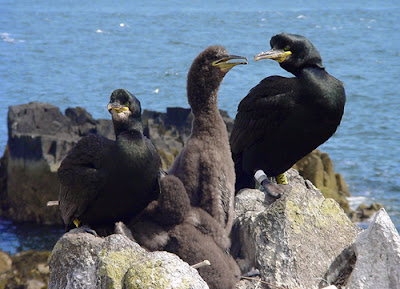Professor Mark Sutton from CEH is currently in Kampala, Uganda at the
6th International Nitrogen Conference, where he has joined other scientists, agriculturalists, environmentalists, industrialists, economists and policy-makers to discuss issues linked to nitrogen management, including food security, human health, agriculture and the water cycle. On Friday (22 November), it is planned that the Conference will finalize and announce the Kampala Declaration on global nitrogen management.
Prof Sutton chairs the International Nitrogen Initiative (INI) which has organised the conference with the African Nitrogen Centre, International Institute of Tropical Agriculture (IITA) and Makerere University College of Agricultural and Environmental Sciences. Also attending the conference are Prof Sutton's CEH colleagues Prof Nancy Dise and Dr Ute Skiba, each of whom are speaking at the event.
The conference, which runs from 18-22 November 2013, has the tagline "Let us aim for Just Enough N: Perspectives on how to get there for 'too much' and 'too little' regions".
Prof Sutton is chairing a session on Global and Regional Assessment and making a keynote speech "Global Nitrogen Assessment: From
Our Nutrient World to the International Nitrogen Management System (INMS)".
Our Nutrient World is the UNEP publication edited by Prof Sutton which was published by CEH earlier this year. It is planned that Prof Sutton will also moderate the finalization of the Kampala Declaration on Friday.
The Kampala meeting is believed to be the
world's first 'Nitrogen Neutral' conference, where delegates are offered the opportunity to contribute offsetting their nitrogen footprint associated with the conference. At the same time, the delegates have adopted a demitarian approach - reducing their consumption of meat by half compared with the usual menu at the conference venue, the Speke Resort Hotel - as a means of reducing their own nitrogen footprint.
A key issue being discussed at the meeting is how to get more Nitrogen into Africa, with the main debate being that of fertiliser usage versus biological nitrogen fixation, and how to get the best from both aspects.
This is the sixth international conference to take place after previous events in the Netherlands, USA, China, Brazil and India. The common objective of these conferences is the design of more productive, economic and sustainable food and energy production systems to meet the challenges of the growing global population whilst minimising the cascade of environmental effects posed by nitrogen. Air pollution, water pollution, biodiversity and climate change are all impacted through "too much" nitrogen in the environment, but it is an essential part of the story to ensuring global good security.
The
International Nitrogen Initiative is a global effort to optimize nitrogen's beneficial role in sustainable food production and to minimize nitrogen's negative effects on human health and the environment.
Additional information
Prof Nancy Dise is speaking on "Impacts of nitrogen deposition on the ecology and biogeochemistry of European peat bogs: The PEATBOG Project" in a session on N and ecosystem health.
Dr Ute Skiba is speaking on "Comparison of N, C and GHG budgets from European forests, wetlands and agricultural land" in a session on N emissions and climate change.
Related links
Staff page of Prof Mark Sutton
Updated 22 November 2013
Prof Mark Sutton was on the Steering Committee and Editorial Team, and was Part 2 Coordinator, of the new UNEP Synthesis Report,
Drawing Down N2O to Protect Climate and the Ozone Layer, which was published on Thursday 21 November 2013, coinciding with the COP19 United Nations Climate Change Conference in Warsaw. Additionally, Dr Ute Skiba from CEH was a lead author on the new report, which aims to inform policymakers and stakeholders about the impacts of nitrous oxide (N
2O) emissions on the climate and ozone layer. More details can be found from the
UNEP press release.




